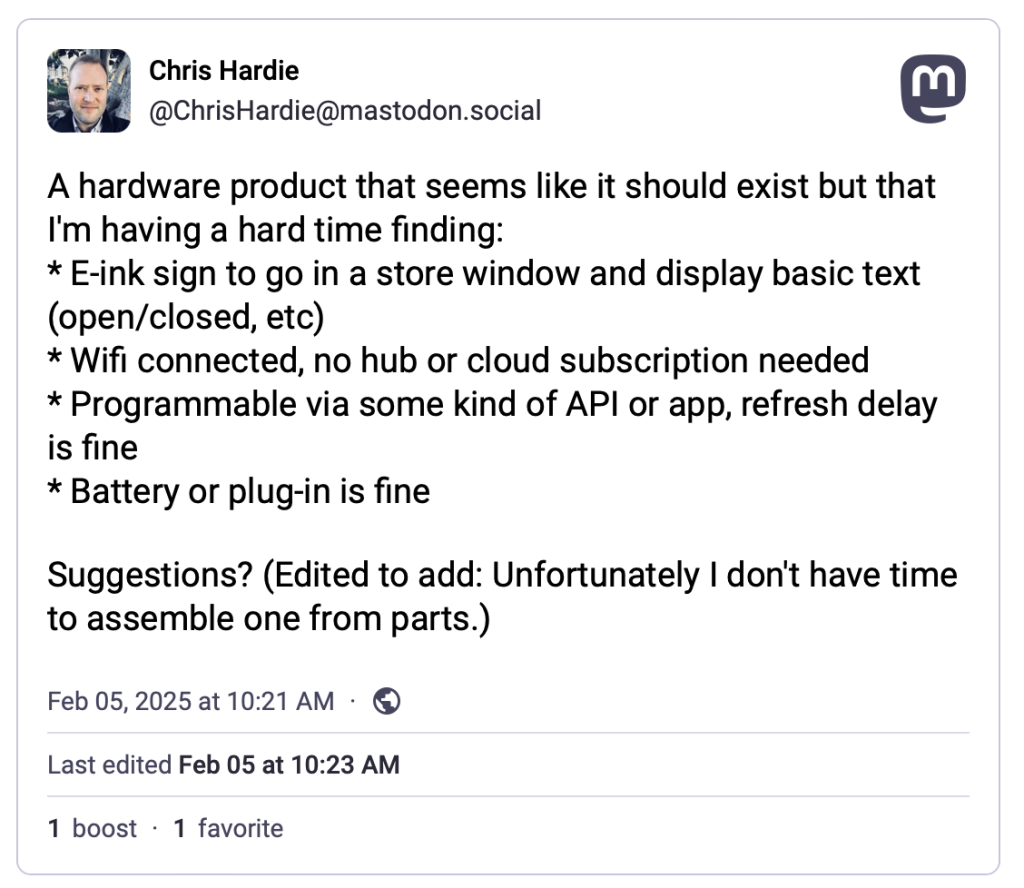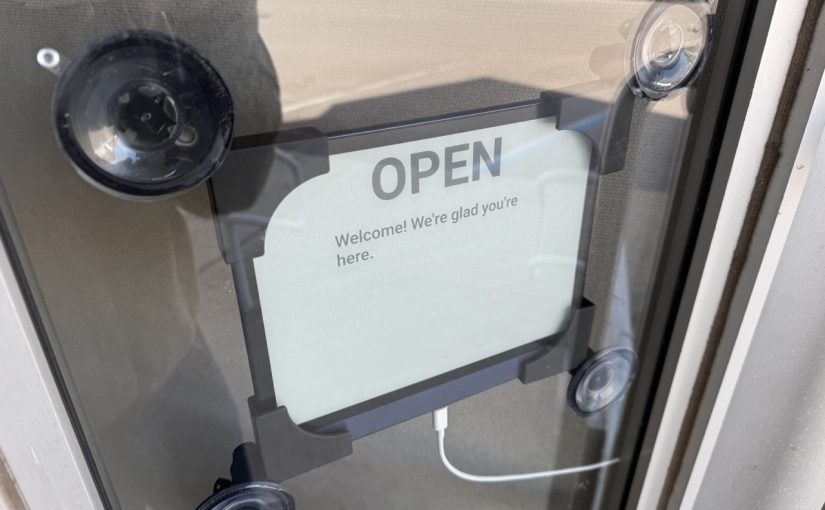I wanted a sign I could mount in the window at the front entrance of our newspaper’s office to display customizable information about our office’s current status and other useful info.
If you’ve ever researched this category of products, you know there are many vendors out there who will happily sell you very expensive devices and supporting accessories to make this happen. This is “call us for pricing” level product sales meant for hotels, convention centers, malls and large office buildings, not for a small community newspaper on a budget.
Even the few standalone products I was able to find for sale on Amazon and elsewhere seemed pretty janky. I’d have to download an app or install a hub with a proprietary communication technology or be constrained to a certain number of characters and layout, or some other limitation I wasn’t quite happy with.
I decided to ask the Fediverse:

(I learned while writing this that Mastodon posts do not seem to embed in WordPress seamlessly – tragic!)
At first, the responses were reinforcing how difficult this might be to find, but then my colleague Scott Evans made a comment that sparked the eventual solution:
I feel like an e-ink reader of some kind might be your best bet (one that can run Android apps). Then you could install a kiosk style browser and update the page it’s pointing at. Something from Onyx?
https://toot.scott.ee/@scott/statuses/01JKBE3QZWEZCMN2QZZH75R6BY
After some searching I found this wonderful blog post by Jan Miksovsky, MomBoard: E-ink display for a parent with amnesia. Jan described using a BOOX Note Air2 Series e-ink device to create a dynamic sign display for Jan’s mom. They used a web browser to load a simple website that would display the latest customized messages based on details configured in web interface elsewhere, source code here. I love it!
I emailed Jan with some questions about the setup and Jan was kind enough to write back with a clarification that the original BOOX ability to launch a web browser on device restart appears to have been removed, but a request is in to restore this functionality.
Jan also had a helpful thought about how to launch the browser in to full-screen mode, which I haven’t tried yet: “That’s controlled by whether a website has a web app manifest defined for it. If it does, then the browser “Add to Home Screen” command should allow you to add the site to your home screen. When launched, it should open in full screen mode.“
I found a used Note Air2 device on eBay for $189 plus shipping and tax. A non-trivial expense, but far less expensive than any of the other options I was finding.
When it arrived I turned off all of the “auto-sleep” type settings so that the device would basically stay on all the time. I tested out having the web browser stay open on one page for days on end, and it worked! Now I just needed to figure out my own web interface to manage the sign message.
Continue reading Using Laravel and an e-ink tablet to make a DIY digital sign for dynamic office window message display